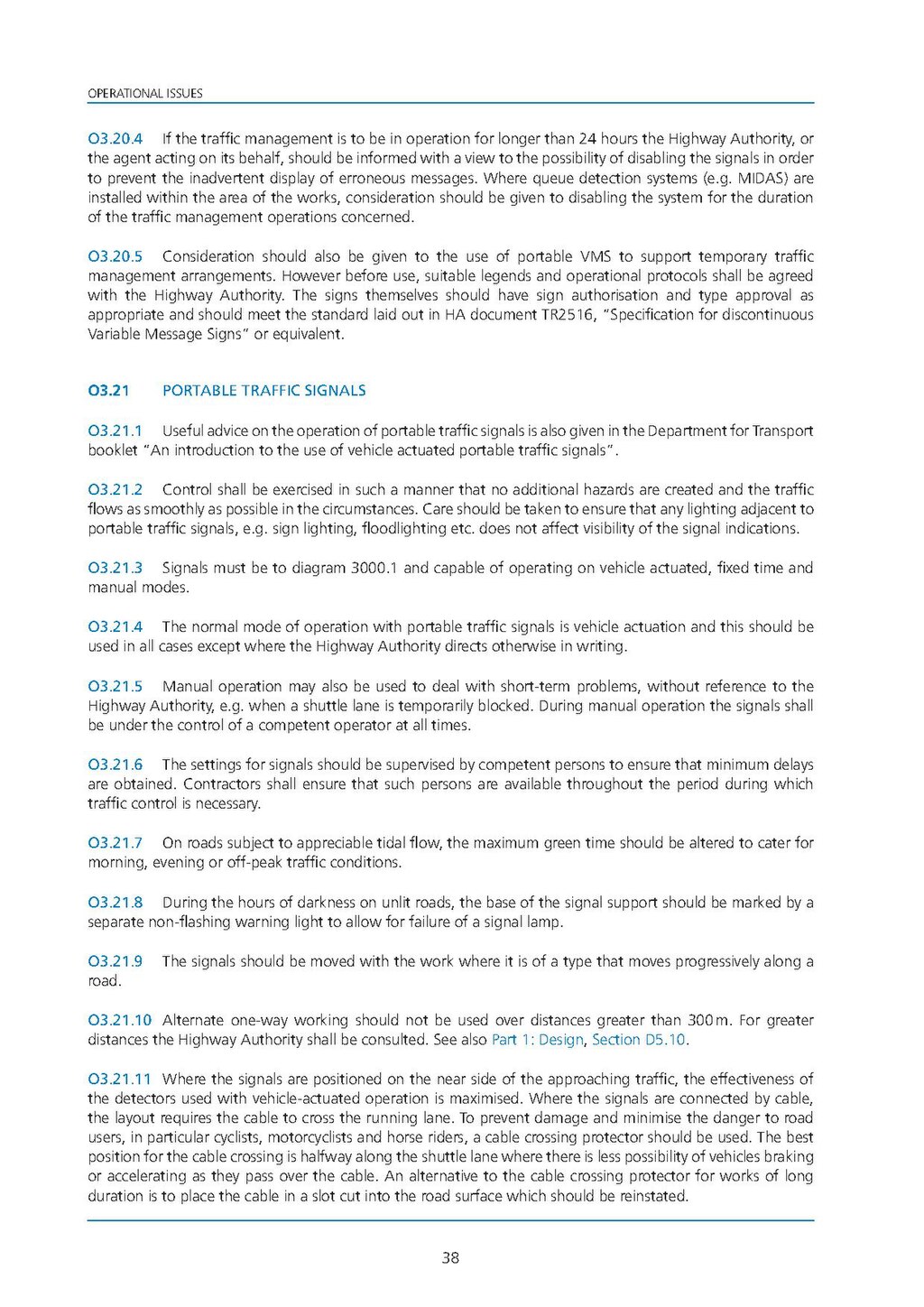O3.20.4 If the traffic management is to be in operation for longer than 24 hours the Highway Authority, or the agent acting on its behalf, should be informed with a view to the possibility of disabling the signals in order to prevent the inadvertent display of erroneous messages. Where queue detection systems (e.g. MIDAS) are installed within the area of the works, consideration should be given to disabling the system for the duration of the traffic management operations concerned.
O3.20.5 Consideration should also be given to the use of portable VMS to support temporary traffic management arrangements. However before use, suitable legends and operational protocols shall be agreed with the Highway Authority. The signs themselves should have sign authorisation and type approval as appropriate and should meet the standard laid out in HA document TR2516, "Specification for discontinuous Variable Message Signs" or equivalent.
O3.21PORTABLE TRAFFIC SIGNALS
O3.21.1 Useful advice on the operation of portable traffic signals is also given in the Department for Transport booklet "An introduction to the use of vehicle actuated portable traffic signals".
O3.21.2 Control shall be exercised in such a manner that no additional hazards are created and the traffic flows as smoothly as possible in the circumstances. Care should be taken to ensure that any lighting adjacent to portable traffic signals, e.g. sign lighting, floodlighting etc. does not affect visibility of the signal indications.
O3.21.3 Signals must be to diagram 3000.1 and capable of operating on vehicle actuated, fixed time and manual modes.
O3.21.4 The normal mode of operation with portable traffic signals is vehicle actuation and this should be used in all cases except where the Highway Authority directs otherwise in writing.
O3.21.5 Manual operation may also be used to deal with short-term problems, without reference to the Highway Authority, e.g. when a shuttle lane is temporarily blocked. During manual operation the signals shall be under the control of a competent operator at all times.
O3.21.6 The settings for signals should be supervised by competent persons to ensure that minimum delays are obtained. Contractors shall ensure that such persons are available throughout the period during which traffic control is necessary.
O3.21.7 On roads subject to appreciable tidal flow, the maximum green time should be altered to cater for morning, evening or off-peak traffic conditions.
O3.21.8 During the hours of darkness on unlit roads, the base of the signal support should be marked by a separate non-flashing warning light to allow for failure of a signal lamp.
O3.21.9 The signals should be moved with the work where it is of a type that moves progressively along a road.
O3.21.10 Alternate one-way working should not be used over distances greater than 300 m. For greater distances the Highway Authority shall be consulted. See also Part 1: Design, Section D5.10.
O3.21.11 Where the signals are positioned on the near side of the approaching traffic, the effectiveness of the detectors used with vehicle-actuated operation is maximised. Where the signals are connected by cable, the layout requires the cable to cross the running lane. To prevent damage and minimise the danger to road users, in particular cyclists, motorcyclists and horse riders, a cable crossing protector should be used. The best position for the cable crossing is halfway along the shuttle lane where there is less possibility of vehicles braking or accelerating as they pass over the cable. An alternative to the cable crossing protector for works of long duration is to place the cable in a slot cut into the road surface which should be reinstated.
38
